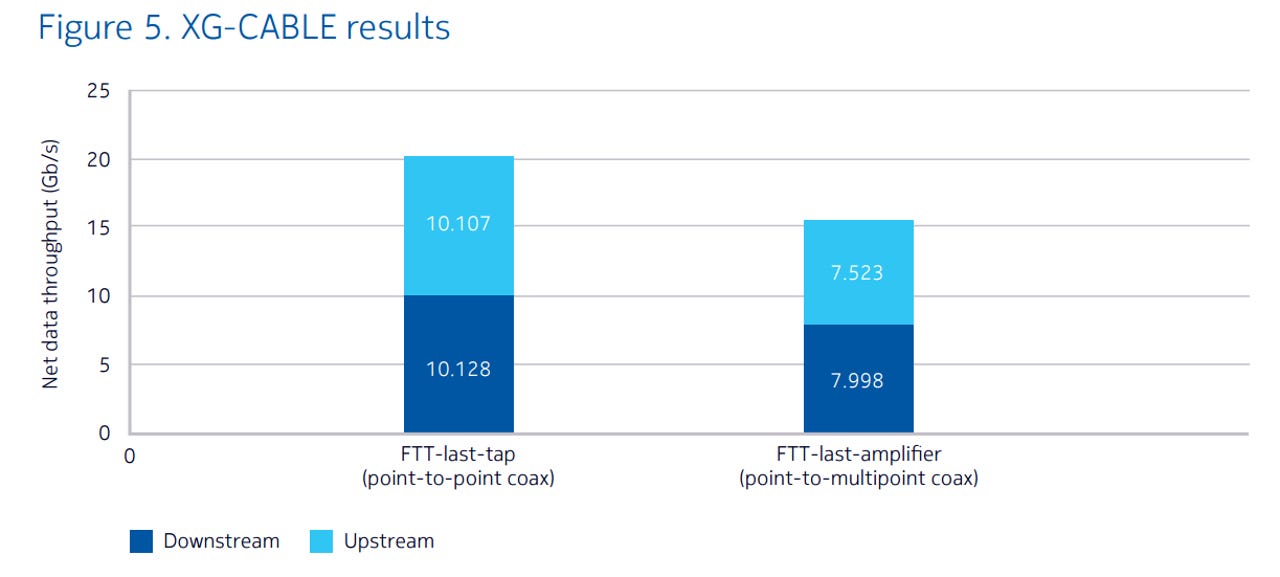Nokia gets 10Gbps symmetrical speeds off HFC in lab test

Nokia Bells Labs has shown off its XG-CABLE proof-of-concept, a technology the company claims will allow for full duplex transmission on hybrid fibre-coaxial networks and is compatible with legacy cable networks.
"XG-CABLE can easily integrate into the CableLabs new Full Duplex DOSCIS 3.1 concept," Nokia said. "By leveraging the XG-CABLE technology, operators can effectively use existing HFC cables over the last 200 meters to provide upstream speeds never before achievable due to the limited spectrum available."

In its lab test, Nokia was able to deliver 10 Gbps symmetrically using 1.2Ghz of spectrum over a 100m point-to-point drop cable. In its point-to-multipoint test, which reflects the topology used in HFC network deployments, Nokia was able to get a symmetrical 7.5Gbps.
The company said it is hoping to improve the echo cancellation that makes XG-CABLE possible to allow for 10Gbps in point-to-multipoint use cases.
Nokia said it would be possible for users to be upgraded to XG-CABLE as needed, once the network's taps and splitters were upgraded to handle DOCSIS 3.1, and more fibre to be rolled out.
"It would not be necessary to replace an installed base of DOCSIS 3.0 cable modems, only switching out those modems where users have subscribed to new XG-CABLE services," the company said.
"XG-CABLE is only suitable for deployments in passive HFC networks (last amplifier or beyond). This requires fiber to be pushed deeper into the network. However, many operators are already pursuing a deep-fiber strategy."
Nokia said a commercial solution was "a few years away", and could increase the lifespan of HFC networks.
"XG-CABLE gives cable operators more options in how to meet the growing bandwidth demands of customers, either upgrading existing HFC infrastructure or deploying FTTH where it makes economic sense," Nokia said.
Nokia gained Bells Lab as part of its €15.6 billion acquisition of Alcatel-Lucent.
In its latest set of results, Nokia reported a €613m loss, but said it made a €139 million profit once the Alcatel acquisition costs were excluded.
Nokia, thanks to Alcatel-Lucent, provides much of the equipment and fibre technology for Australia's NBN multi-technology mix rollout.
After the election of the Coalition government in 2013, the National Broadband Network switched to a rollout that would cover 20 percent of the population with fibre-to-the-premise; 38 percent with fibre-to-the-node and fibre-to-the-basement; 34 percent with HFC; 5 percent with fixed wireless; and 3 percent with satellite services.
A 4,500 premise HFC trial conducted by NBN earlier this year showed an average speeds of 84Mbps down/33Mbps up, with the company responsible for deploying the NBN across Australia saying DOCSIS 3.1 and node splitting would improve these speeds by mid-2017.
HFC will connect 4 million Australian premises in total, with 3.6 million of these coming from the old Telstra HFC network. The network will also be extended and infilled, with the Optus network likely to be infilled and overbuilt in the remaining 400,000 premises.
NBN's HFC products are set to be launched next month.